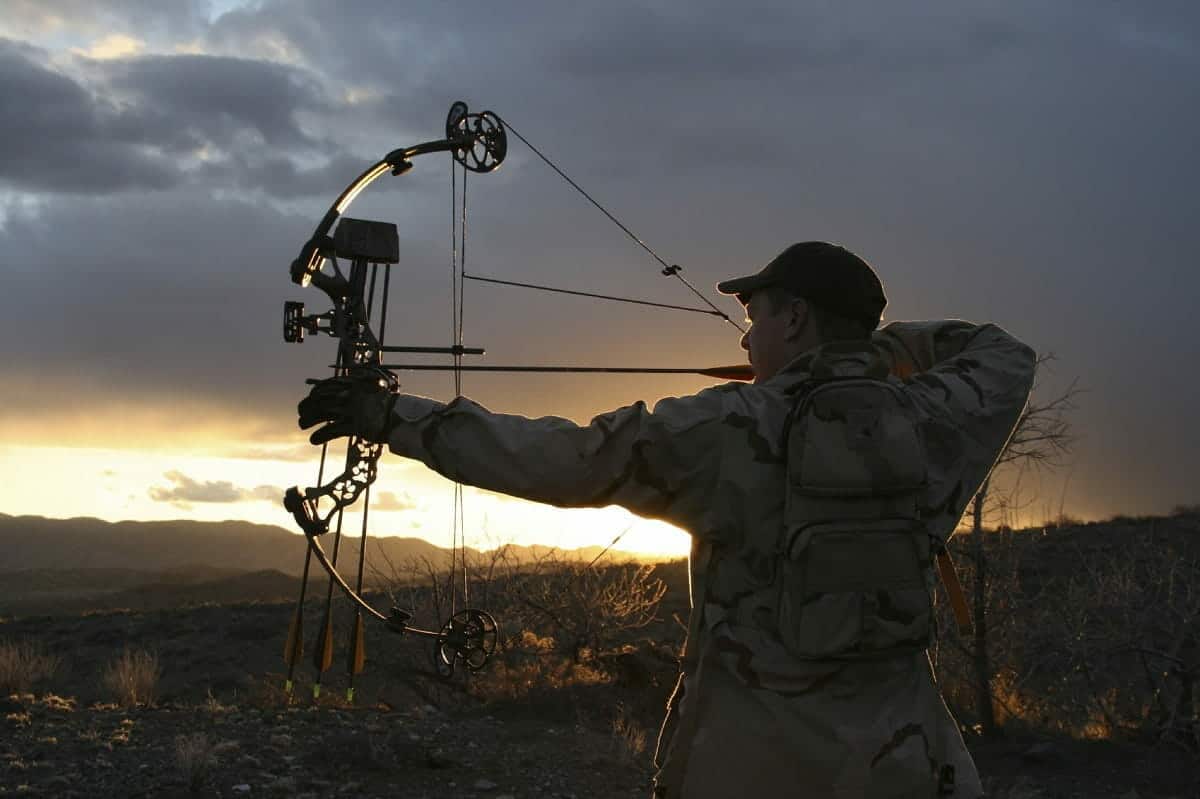Many hikers seem to fall on either end of the spectrum when asked about trekking poles. Some have never touched a pair and others swear by them. Those that swear by them, however, point out some important tangible benefits. Most notably, trekking poles significantly reduce wear and tear on your knees and ankles, especially on long, sustained downhill sections.
Most experienced long-distance hikers don’t leave home without trekking poles. If you’re on the hunt for a new pair, it starts with sorting through all the options available. Our list of the 10 Best Trekking Poles is designed to help you find the right pair for your needs. Also, be sure to read through our comprehensive Buyer’s Guide, which lays out the most important factors to consider when selecting trekking poles.
1. Kelty Range 2.0
The Kelty Range 2.0 trekking poles feature anti-shock spring technology and non-slip carbide tips that ensure secure pole plants on a variety of surfaces. The poles boast all-weather grips, made from textured cork and EVA (1) foam, which help you adapt to changing topography with ease and comfort.
These poles also come with a padded wrist strap for added comfort, as well as rubber tips, trekking baskets on each pole, and protective caps. The poles use a reliable twist-lock mechanism to collapse or extend to your desired length.
2. Hiker Hunger Carbon Fiber
These 100% carbon fiber trekking poles are some of the strongest and lightest on the market. Each pole weighs just 7.6 ounces, which means they both weigh less than 1 pound combined. The carbon fiber they are constructed from is also a natural anti-shock material.
The Hiker Hunger Carbon Fiber trekking poles featured quick flip locks that allow you to collapse them in an instant. They can extend from 24 inches to 54 inches in a matter of seconds, which makes them easy to secure to your backpack when not in use. They also featured ergonomic, moisture-wicking cork grips that conform to the shape of your hand for comfort and improved usability.
3. Black Diamond Alpine Carbon Cork
Black Diamond’s Alpine Carbon Cork trekking poles are four-season poles crafted with premium materials and an ergonomically angled grip. These alpine trekking poles are specifically designed for backpacking, winter ski touring, and long hikes.
The poles feature a dual-density top and natural cork grip that wicks away sweat and moisture. They are built with carbon fiber mid and lower shafts and an aluminum upper shaft. They also boast a 360-degree padded webbing strap, dual FlickLock Pro adjustability, and a 15-degree corrective angle for optimal grip position.
4. LEKI Micro Vario
These trekking poles are made of five separate aluminum shafts and use a push-button release mechanism for quick and easy assembly. They collapse down to just 15.5 inches for a small package that’s easy to secure to the exterior of your pack when you’re not using them.
The LEKI Micro Vario trekking poles have also recently been upgraded to include LEKI’s best-selling COR-TEC grips for the first time. The interior of these poles contains a PE-coated (2) reinforced tension cord for long-term reliability. Finally, these trekking poles feature air-textured security straps, carbide flex tips, and compact performance baskets.
5. Chinook Cane Walker
The Chinook Cane Walker 3 is a single, anti-shock hiking pole. It is made of lightweight, anodized aluminum and boasts a strong carbide tip for better performance on rocky or icy surfaces. It’s designed to make hiking easier for both novice and experienced hikers.
This trekking pole contains three sections and its length is adjustable from 26 to 53 inches. It contains an anti-shock spring system and comfortable PU (3) cork handle with web strap for comfort. Lastly, this trekking pole comes with a rubber tip and two baskets, one for hiking and the other for use in snow.
6. Montem Ultra Strong
Montem’s Ultra Strong trekking poles, made to support up to 350 pounds, are ideal for hiking, backpacking, mountaineering, snowshoeing, and a variety of other applications. These telescoping poles collapse down to just 24 inches to easily secure to your pack when you don’t need them.
The shafts of these poles are made of aluminum 7075, which is the same material used to build airplanes. This is why Montem backs these poles with their Lifetime Replacement Promise (4). These trekking poles also feature easily storable rubber tips, pole connections, and mud baskets. Finally, they weigh a total of just 19.2 ounces together and feature EVA foam grips.
7. Black Diamond Distance Carbon Z
These trekking poles are some of the lightest on the market, but they’re also extremely sturdy and reliable. They offer four distinct fixed length options: 100cm, 110cm, 120cm, and 130cm. When collapsed, these trekking poles range from 13 inches (100cm) to 17 inches (130cm) in length, which makes them easy to secure to your pack’s exterior when you need free hands.
The Black Diamond Distance Carbon Z trekking poles are crafted entirely of carbon. This makes them light, strong, and ideal for extended backpacking or mountaineering expeditions. Their carbon fiber construction contributes greatly to support and vibration reduction on even the harshest terrain. These poles also feature a padded safety strap and EVA foam grips.
8. LEKI Corklite DSS
The LEKI Corklite DSS trekking poles are specifically designed for long days on the trail. Their Aergon COR-TEC grips are made of 80% natural ground cork. They offer an extremely comfortable grip that only improves as you stack on more and more miles.
These trekking poles boast the ultra-lightweight, highly breathable LEKI Skin strap, which provides maximum comfort and minimum weight. The poles come with three aluminum shaft segments with a Speed Lock 2 locking system. Lastly, LEKI’s Dynamic Suspension System (DSS) provides anti-shock support that can reduce peak impacts by as much as 40 percent.
9. Mountainsmith Halite
These trekking poles are manufactured with aluminum 7075 (5) and collapse down to 16 inches for storage and portability. They’re an excellent choice for backpacking, snowshoeing, hiking, and mountaineering, and they boast adjustable neoprene wrist straps so that you don’t lose them during a brief slip and fall.
The Mountainsmith Halite 7075 trekking poles are made with four collapsible sections held together with vinyl-coated cable connectors. The poles contain outer lock height adjustment mechanisms for quick adjustment to your desired length. They also feature cork/EVA handles and come with both hiking baskets and baskets suited for snow.
10. Black Diamond Trail Ergo
The Black Diamond Trail Ergo Cork trekking poles are ideally suited to year-round use, whether that’s in the form of hiking, backpacking, snowshoeing, ski touring, or your other preferred activities. They are made of light aluminum with handles of soft, natural cork.
These trekking poles boast adjustable flick locks that connect all three pole segments for easy adjustment to your preferred height. They are adjustable from 74 to 140 centimeters and come with interchangeable carbide tech tips, low-profile trekking baskets, and powder baskets. Finally, these trekking poles offer natural cork grips to wick away sweat. These grips are angled at 15-degrees for optimal grip position.
—
Buyer’s Guide
According to the Mayo Clinic (6), “Walking poles help you maintain proper posture, especially in the upper back, and may help to strengthen upper back muscles.” The health benefits of trekking poles also extend to other areas of your body, as the Mayo Clinic indicates. They “take some of the load off your lower back, hips and knees, which may be helpful if you have arthritis or back problems.”
Anyone who plans to be hiking, backpacking, or mountaineering throughout their lifetime will eventually find themselves in need of a quality set of trekking poles. They’ll keep you healthy and improve your longevity. So, if you’re in the market for a new pair of trekking poles, our Buyer’s Guide will focus on the major factors that will help you narrow down your decision.
Single or Double?
The first consideration is whether you want two poles or one. Many of us grew up finding and fashioning walking sticks for ourselves in the early days of our hiking careers. Whether you choose two poles or one is largely a personal preference. One pole can be great for shorter hikes or the final summit push, while two poles greatly assist in balancing weight over longer mileages.
Twist Lock or Flick Lock?
Most poles offer one of two varieties of locking mechanisms: the ‘twist’ or the ‘flick.’ The type that will work best for you largely depends on the primary activity you’ll be using them for. In the winter, your poles will actually contract in cold temperatures, which can render twist locks ineffective. Furthermore, it’s much easier to operate flick locks when wearing gloves or mittens.
If you’ll use your poles exclusively during the summer months, however, twist locks are the preferred mechanism. They are much easier to adjust on the fly when tension is off. This is because they can be deconstructed and adjusted without the need to carry any additional tools. Most flick lock mechanisms, on the other hand, typically require a screwdriver to make larger adjustments.
Do You Need ‘Shock-Absorbing’ Poles?
Shock-absorbing poles are best suited for individuals with chronically achy joints or those who experience knee discomfort on long downhill trail segments. As their name suggests, these poles soak up more impact when descending so that knees, ankles, and joints suffer less wear and tear.
However, poles equipped with shock-absorbing technology generally don’t perform as well on an ascent. They result in a slight loss of power and, they can also mean compromising on stability when descending. Some manufacturers have actually started making poles with shock absorbers that can be turned on or off. Be careful though: this feature will typically add quite a bit of weight to you pole setup.
Folding or Telescoping?
Trekking poles can largely be broken into these two categories: folding or telescoping. Most of the original trekking poles were telescoping. They typically come with two or three sections, which can each be adjusted to your preferred length.
Two-section telescoping poles are generally better for individuals who are tough on their gear. They have less “moving parts” and are great for snowshoeing, cross country skiing, and other heavy use applications. The downside of these poles is that they are usually the tallest and, therefore, heaviest option.
Three-section telescoping poles are more common, and they tend to outperform their two-section counterparts when it comes to strapping them to your pack when you want your hands free. They compromise a bit when it comes to durability, in comparison to two-section poles, but they make up for it by offering a much lower base weight without giving up anything in terms of durability.
Folding trekking poles are a bit of a newer style with a similar design to that of most tent poles. They are made of multiple lightweight shafts and held together by some sort of shock cord. These poles will fold up even smaller than most three-section telescoping poles and usually weigh less as well.
Folding trekking poles come with either a set length or flick lock adjustment mechanisms. They tend to be great all-around trekking poles, although they aren’t typically as durable as telescoping poles. However, they offer an excellent choice for thru-hikers, splitboarders, and uphill skiers. They only additional caveat is that folding poles usually don’t offer enough adjustability to make them useful as a support for a tent or shelter.
Carbon or Aluminum?
The best trekking poles on the market today are either constructed of carbon or aluminum. While carbon poles can be considerably lighter, they’re typically also more expensive and can be more likely to break or crack. If you’ve already invested a considerable sum into your backcountry setup, you won’t be disappointed with aluminum trekking poles. Although they’re a bit heavier, aluminum trekking poles are much more durable, not to mention the more economical option.
Grips: Foam, Cork, or Rubber?
When considering the grips of trekking poles, you’ll most likely be choosing between foam, cork, and rubber, so here’s a quick breakdown:
Foam is the softest of these three materials. Because of this, many hikers also find it to be the most comfortable. However, foam absorbs water and tends to break down faster, which means it might not be the best option for those hiking in wet climates or heavily using their poles.
Cork is moisture-resistant and, while it might not be the most comfortable at first, typically becomes easier to use because it will mold to your hand over time. Cork is also anti-microbial, so it will hold less scent, but it can be heavier than foam, which tends to make poles with cork grips a bit more expensive.
Rubber is probably the least comfortable of these three options, but it’s also the most water-resistant, which makes it the best choice for winter activities like snowshoeing. In hotter weather, however, rubber can quickly lead to chafing when the user sweats more profusely.
When it comes to grips, it can also be beneficial to find poles with grip extensions. These are sections of foam or cork that ‘extend’ four or five inches down the shaft. Grip extensions will give you the option of repositioning your hands when moving over varying terrain, essentially eliminating the need to stop and readjust pole length every few minutes.
Tips: Rubber or Carbide?
Carbide steel tips are the most common on quality trekking poles. They are great for wet surfaces, loose dirt, and in the snow. However, carbide tips are noisier and also tend to skid out dangerously on hard surfaces. Many also claim that carbide tips inflict more damage to trails than necessary.
Rubber tips, on the other hand, are quieter and tend to be a great option for hard surfaces such as pavement or slick rock. They tend to lag behind carbide tips in performance, however, on wet surfaces and loose rock or dirt.
Baskets: Options?
Trekking pole baskets largely boil down to a summer and winter option. Most summer baskets and small so that they aren’t easily snagged in brush or undergrowth. Not all poles give you the option to switch baskets out, but if you want to use them throughout all four seasons, the ability to swap summer baskets out for winter (or “powder”) baskets is essential.
Frequently Asked Questions
While humans have undoubtedly been employing walking sticks for centuries, Exerstrider produced the first poles specially designed and marketed to “fitness walkers” back in 1988 (7). Before that, skiers deprived of snow, as well as all manners of hikers, backpackers, and outdoor enthusiasts, were largely using one-piece ski poles for additional support on the trail.
If you’re not yet convinced about the need for trekking poles, consider that some studies have shown as much as a 46% increase in energy consumption in individuals walking with poles when compared to those walking without. Keeping that in mind, our Frequently Asked Questions section aims to answer any lingering questions about how to choose the right trekking poles for you.
How do I know what length of pole I need?
It’s hard to give an exact scientific process for determining ideal pole length. This is because the length will vary depending on terrain. On flat and gradual terrain, poles should be adjusted to that your elbow is bent at 90 degrees when you’re standing upright. Then, poles should generally be shortened on uphill sections, lengthened when trekking downhill, and can be adjusted to different heights (downhill longer) when traversing a mountainside.
For starters, however, measure from the tops of your hands to the ground when standing on flat ground with your elbows at your sides and bent at 90 degrees. This will give you a great starting point. The chart below may also be of some use, but keep in mind this chart is for fixed-length poles only.
How do I extend the life of my trekking poles?
Caring for all of your outdoor equipment is key to their longevity. When it comes to trekking poles, the best thing you can do is to take them apart to let them dry after every use (whether it was a dry or rainy day). If you have telescoping poles, extend them all the way and make sure they are dried thoroughly before collapsing them again.
What’s the right way to use the wrist straps?
This is one of the most common ways people misuse trekking poles. The proper way is to put your hand up through the bottom of the strap and then pull down to grab the pole grip. This will result in the wrist and heel of your hand being supported by the strap, which allows you to relax your grip and still maintain the effectiveness of the pole over many miles.
Where should I plant the tip of my poles when walking?
This is another common mistake we see new pole users make often. In attempts to “pull” themselves up a steep incline, people will plant the tips of their poles way out in front of them, bend at the waist, and try to pull themselves up using little more than their triceps.
When walking with trekking poles, you should maintain a natural gait and arm swing. This will result in poles being planted right next to (or slightly behind) your hip. In this way, you’ll instead be “pushing” yourself up that hill using not just your triceps, but also your biceps and all those larger muscles in your shoulders and abdomen.
Summary
In addition to keeping your body healthy on longer expeditions, some have suggested that trekking poles are essential survival tools, with applications like emergency splint construction, tarp support, and fending off snakes or other animals in the wild (8).
Whatever your intended uses, we hope that you’ve found the information in this article thorough and useful. We wish you the best of luck selecting your next pair of trekking poles and, once you do, we wish you happy hiking!













